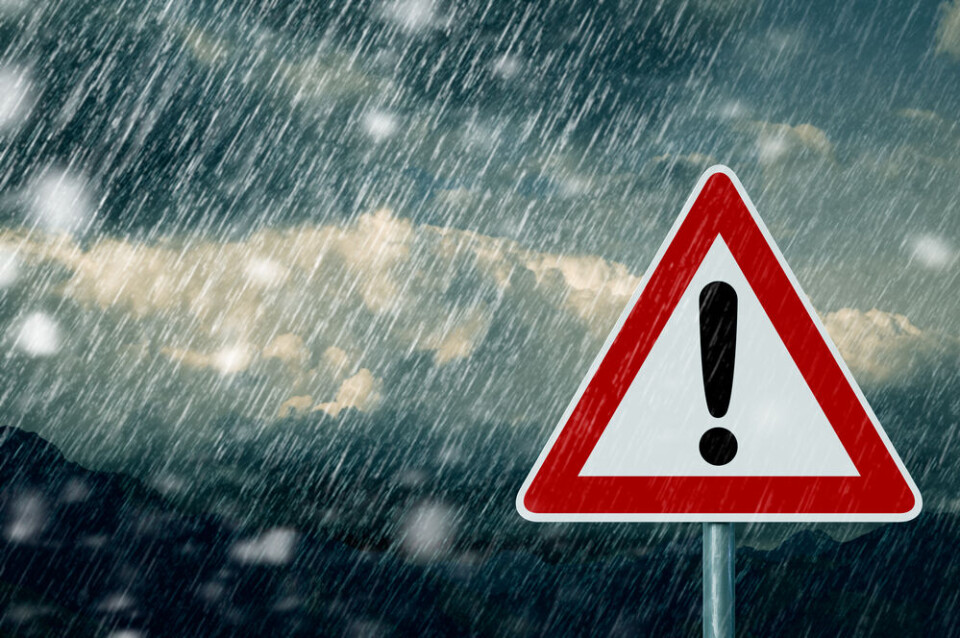-
Travel and transport: What's new in France in 2026
From mini-bus trains to flight operator changes
-
Six good news stories from France in 2025
From revolutionary eye surgery and sporting successes, to successful fundraising for iconic French brands, the year was full of feel-good news
-
Why is New Year's Eve known as Réveillon de la Saint-Sylvestre in France?
You may have heard French friends use this term but they might not know where it comes from
What action is advised with different Météo France weather warnings
The weather warning system has been in place since 2001 and is intended for the public as well as professionals who may need to be kept aware of bad weather

The Connexion frequently provides weather updates and in these we talk about ‘warnings’ given to departments.
These are the warnings raised by Météo France, the official forecasters and meteorological experts in France.
Other websites, such as La Chaîne Météo (owned by Le Figaro) have their own alert systems, which can differ from Météo France, but we usually follow the official warnings.
Météo France has used this system since 2001 to inform both the public and professionals about current or forecasted weather situations department by department, allowing them to act accordingly.
How do they work?
Warnings can correspond to a number of negative weather phenomena, including heavy rain, storms, flooding (from rains, burst riverbanks, or coastlines), strong winds, canicule and vague de chaleur (two types of heatwave), snow, and icy conditions/black ice on the roads.
The warnings are also relevant to a specific department, using each area’s geographical parameters before issuing warnings.
For example, whilst a few centimetres of snow in Paris or Marseille might cause major disruption and danger on roads (causing issues to be warned), the same amount in a mountainous department would not be necessary as the relevant infrastructure exists.
Read more: 4 tips to stay safe and check icy roads in real-time in France
The same goes for hot weather – temperatures of 35C may not be cause for warnings in the south but could be in other areas.
Warnings are based on expert predictions and expected weather patterns, and information is provided for the next two days.
The list of warnings is updated at 06:00, and then again at 10:00 and 16:00 if changes are needed.
In evolving situations or serious incidents, updates can be more frequent.
Warnings can either last for the entirety, or part of, a day. For example, storm warnings may only be in place between 18:00 and 22:00, but a heatwave warning will be in place permanently until the weather changes, even if temperatures get cooler overnight.
Read more: ‘Face the reality’: France ‘must prepare’ for +4C global warming
What does each level correspond to?
There are four levels overall, which are associated with a different colour: green, yellow, orange, and red:
Vigilance verte (green level)
This is the standard level, when no warnings are in place in a department. No action needs to be taken.
Vigilance jaune (yellow warning)
A tier-two yellow warning recommends that people ‘stay alert’ due to the dangerous weather.
It is often deployed when an area is facing a fairly intense weather event it is accustomed to (for example, strong winds in Brittany).
It recommends you keep up to date with local weather reports in your area, both using the Météo France website and through local media.
Vigilance orange (orange warning)
A tier-three orange warning recommends people stay ‘extremely vigilant’.
The incoming weather is ‘dangerous’ and you should take special care if outside during it – being outside during the event is only recommended if necessary.
In relevant situations – such as heatwaves – local authorities may issue temporary measures.
You should check with these local authorities (mairie, departmental prefectures, etc) using the internet or other local news sources to see if temporary rules have been put in place.
Vigilance rouge (red warning)
A tier-four red warning is the highest possible, with residents being asked to maintain ‘absolute vigilance’.
“Dangerous phenomena of exceptional intensity” are forecast at this level.
You should not go outside unless absolutely necessary, and you should limit your activities that might put you in danger.
You should regularly keep up to date with weather reports and local media, and it is likely that local authorities will have issued specific warnings or guidelines.
You should keep informed of these, as well as of any temporary rules or measures imposed by local authorities (which are likely to have been made, especially for long-lasting events like heatwaves).
Related articles:
Storms in France: what to do if at home, out walking or in car
What to do (and not do) during heavy rain and flood alerts in France
























